2016 was a hectic twelve months.
I hit the ground running (water swimming?) with a visit to Norway in early January, where I met many terrific mammals, both aquatic and terrestrial. I still haven’t edited most of my photos from the adventure (no surprise eh?), but if I have to pick one, it would be the following image, which I took on my final day on the water.
Depicted is a mature male orca (Orcinus orca) herding herring:
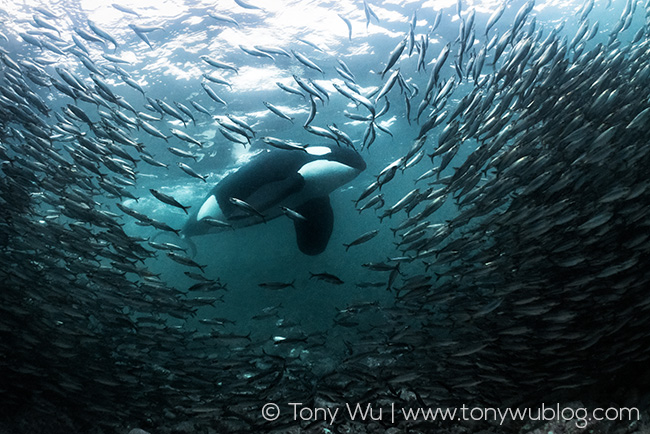
The orca in the photo was working in tandem with another bull, circling and herding, waiting for the right opportunity to slap-and-slurp a few fish. My friends Kari and Simon entered the water first. I watched for a while to see how the orcas and fish reacted, then slipped in after deciding upon a strategy. Which promptly failed. Because orcas, it turns out, are smart.
It took a while, but I re-adjusted to the orcas’ adjustment, and eventually managed to get one to tolerate my presence. Actually, if I had to venture a guess, I’d say he eventually decided to use me as an ad-hoc herding partner, driving herring toward me to squeeze the fish between two large animals, while letting me think that I’d worked out how to get him in to the position I wanted him to be in. Clever, no?
Perhaps I should have had mixed feelings about being so used, but on the whole, I think we struck a reasonable balance. Orca gets fish. Tony gets photo. If only all inter-mammalian transactions were so easy and rational.
I like the image below too, because of how close the bull (different from the one above) approached:
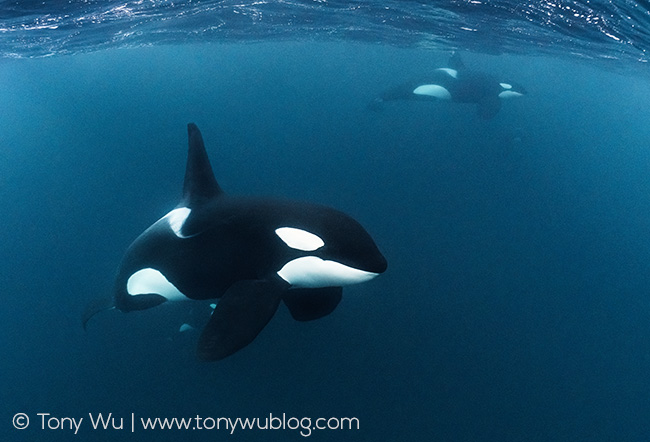
One thing worth noting is that I spent a lot of time watching how the orcas behaved, so I didn’t actually get in to the water often. Partly, this was because I wanted to understand the animals as much as possible before attempting to approach them. But also, it was just stupid cold:
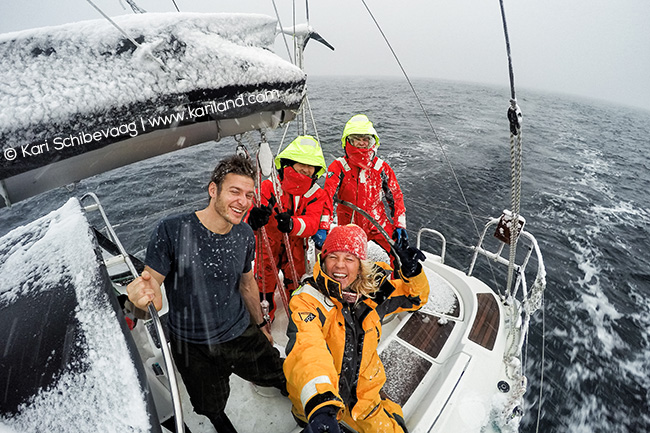
I learned many other useful things during the trip as well. Like…Fridays are taco nights in Norway. Yes, I kid you not. Grab a convenient Norwegian and ask (but they put corn on their tacos…yuck). All of their winter clothes have thumbholes at the end of the sleeves, which I absolutely love(!) because my hands stayed (kinda) warm and I was able to fiddle with my clothes when I was bored. People seem to enjoy going into ridiculously hot saunas and then (voluntarily) plunging into freezing-cold seawater, then repeating. (No, I did not do this. Duh. I’m Chinese, I have built-in common sense.) Also, it sucks big time when you don’t see the sun for a couple of weeks.
A couple of journalists from by D2 (Hi Thomas, Ola!), a weekly put out by the publishers of Dagens Naeringsliv, joined us for a few days and made a short video of me blabbing about whales and such. Link here if you’re interested, and a bit more about the trip here.
I found myself in the Baja Peninsula next, where I spent a week playing with gray whales (Eschrichtius robustus), like this adorable little one (by little, I mean 4+ metres and 2+ tons), with part of mommy visible in the background.
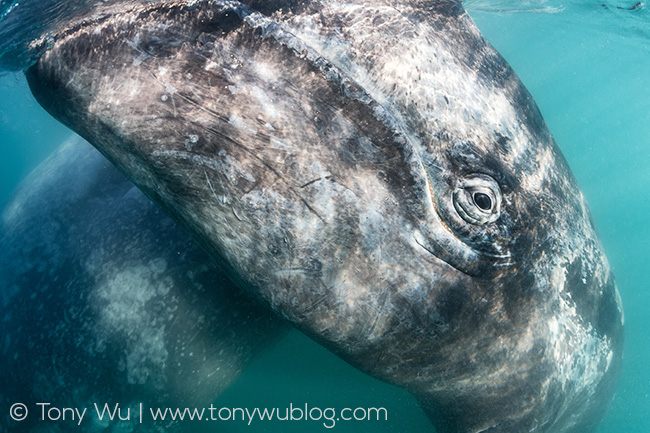
It was my second visit to see the grays; I’m sure it won’t be my last. One really can’t ever get enough of frisky baby whales demanding that you play with them. Seriously, trust me on this one. (More about the trip here.)
Here’s another photo of a baby gray whale…just to underscore how crazy-ugly-but-irresistibly-cute they are.
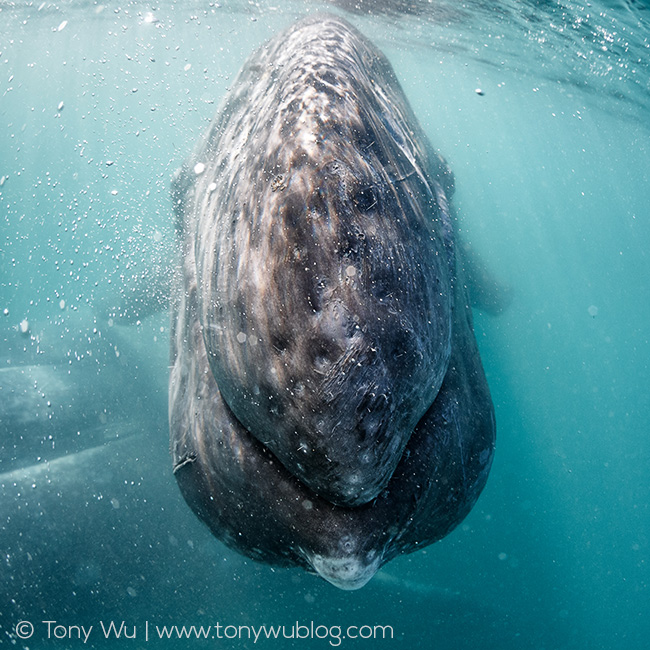
Taking a break from cetaceans, I also went back to Palau to continue documenting fish spawning aggregations. Though I haven’t had time to sort through most of the photos, I love this one:
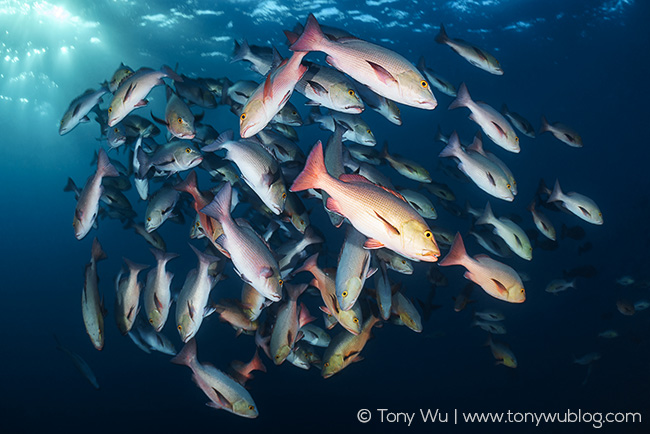
Depicted is a group of snappers coming back from a spawning run, meaning they’ve done their business and are in the process of regrouping for another go. The oblique light of the early-morning 06:30 sun, the colour variations of the fish, and the difficulty of being in the right spot to capture the situation make the shot for me.
Though I didn’t take the following photo in 2016, I should probably mention it, because the photo was the winner of the underwater category of the 52nd Wildlife Photographer of the Year competition, so this photo was definitely a highlight for me last year.
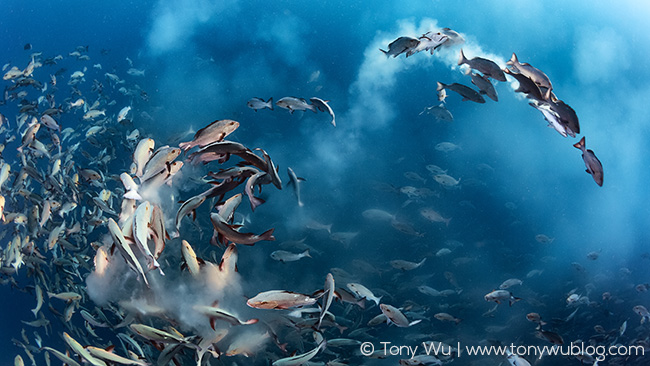
Spawning aggregations are something I’ve pursued for several years, so it was nice on one level to receive recognition. More than anything though, I was happy that fish got some attention. What I mean is that fish aren’t particularly charismatic, in the sense that sharks, whales or any other megafauna would be, and really, most people can’t relate to a Lutjanus bohar. Right?
Mention the word “sex” though, even in the context of fish, and people tend to pay attention. That’s exactly what I did at the award ceremony, precisely because I wanted everyone to think about fish for a few minutes.
Click here if you want to read more about #WPY52 and see a video of me being a little bit naughty at the award ceremony.
From there I found myself in South Africa and Alaska in rapid succession, where I photographed leaping bottlenose dolphins and common dolphins racing at high speed while chasing sardines (click to read more about South Africa), and humpback whales surging out of the water with mouthfuls of herring (click to read more about Alaska). A couple of images from those trips:
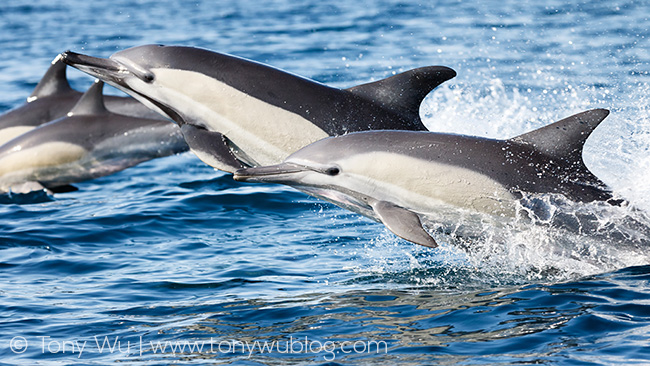
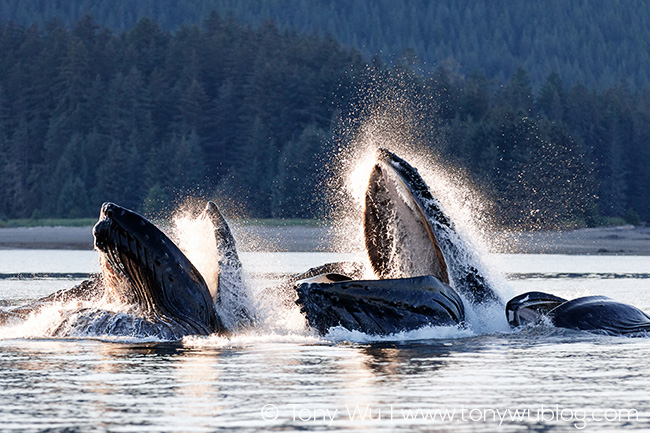
From Alaska, I went south to Tonga for my 15th season. There were, as always, many wonderful encounters, but one mother/ calf pair was particularly special. Here they are the first time I met them, calf resting under mommy’s chin:
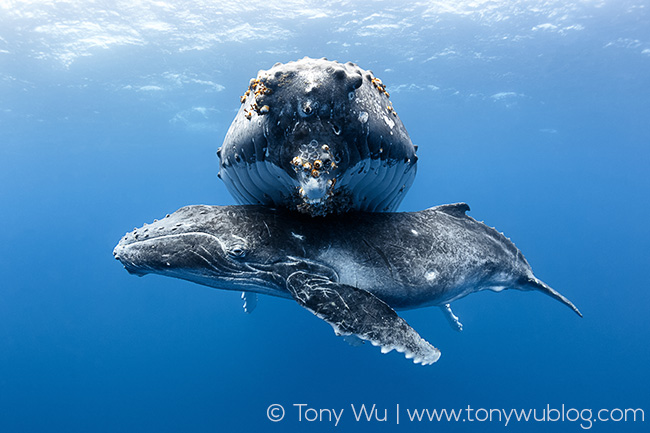
…then with an escort the next time I saw them (note the bent spine—I have to wonder whether that was from birth, or if it’s a case of “Life happens”):
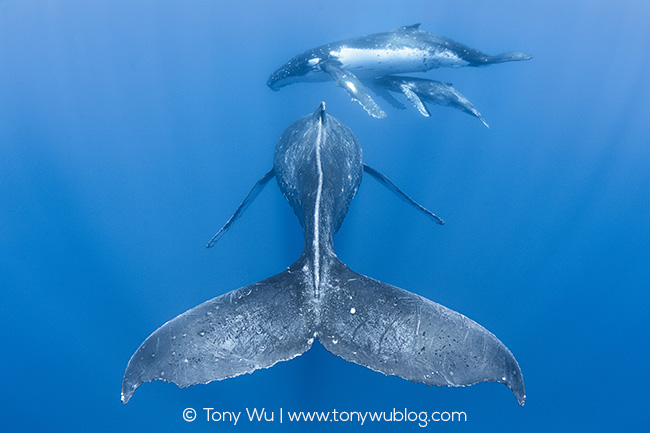
And finally, baby having a bit of a feed in between bouts of play:
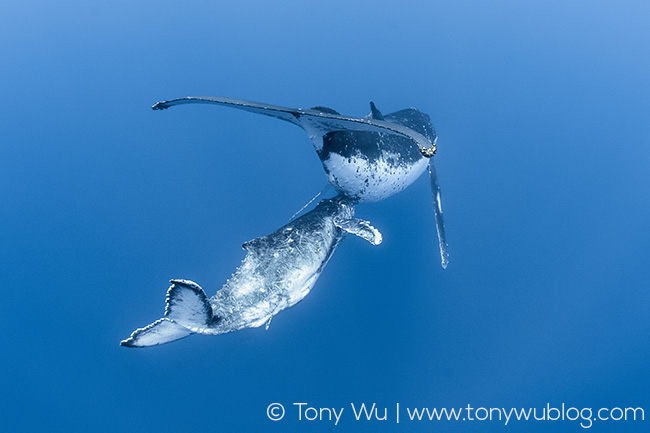
I could go on for dozens more photos, but I’m doing my best to keep to Jim Goldstein’s specifications of 5 to 10 favourite images (I failed you again Jim), so I’ll wrap up with a few non-marine photos from back home.
The first is a waterfall in Nagano Prefecture. It’s not a particularly famous one. In fact, there was no one else there when we visited.
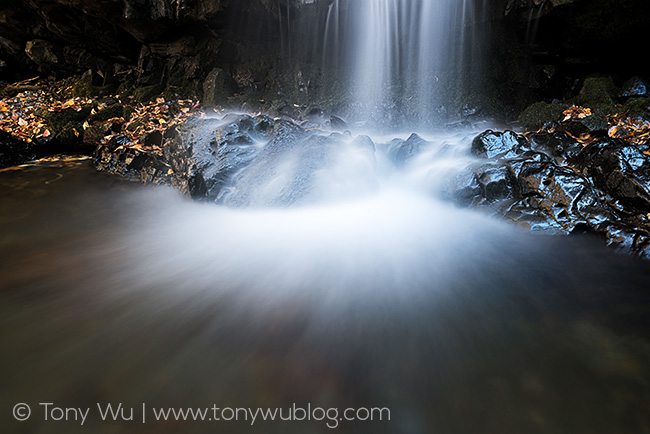
The next one is a teeny-weeny Japanese tree frog (Hyla japonica), in Yamanashi Prefecture. Photos of these adorable Kermits usually show them in bright green colouration (example here), so I didn’t recognise the frog at first. Only later, when I learned that these animals match their hue to the prevailing foliage (it was late autumn, so variations of brown were most prominent), did I realise what it was. So I learned something new, and I got to spend time with a good friend (Hi Dan), crawling like little kids under the (very) low branches of a tree, watching this adorable amphibian.
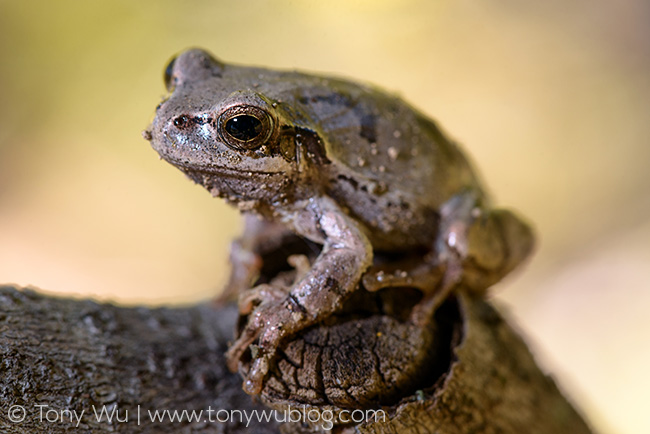
The final photo depicts a perfect autumn day, when the scenery, the air, the sun, the mood, everything…was just right. There was nothing special per se, meaning there was no “must-see” spot or thing that would’ve attracted hordes of self-absorbed, selfie-snapping tourists. Nope, it was just a nice, secluded spot, where we saw a few other people, where everyone was immersed in the then-and-there, enjoying the moment, reveling in just being.
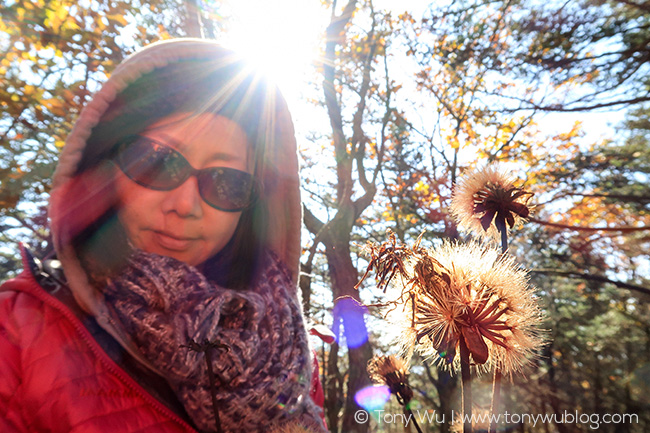
Actually, that’s the common thread that ties the last three images together.
Wherever you are, whatever you’re doing, there is beauty all around and lots to see/ learn. All you need is open eyes, heart and mind. Just a thought for the new year.
As I’ve done the past few years, I’m contributing this post to Jim Goldstein’s annual Best Photos Project. When Jim publishes the final list, I know I’ll spend the better part of a day looking through the links. I’d encourage you to do the same. Experiencing a wide range of wonderful places and moments through the eyes, lenses, and thoughts of so many dedicated photographers is a terrific way to start the year.
Finally…to everyone who helped me, put up with me, suffered me, consoled me and babysat me in 2016…Thank you, from the bottom of my heart. See you again this year!
Update 10 January: Here is Jim's list with contributions from 169 photographers.